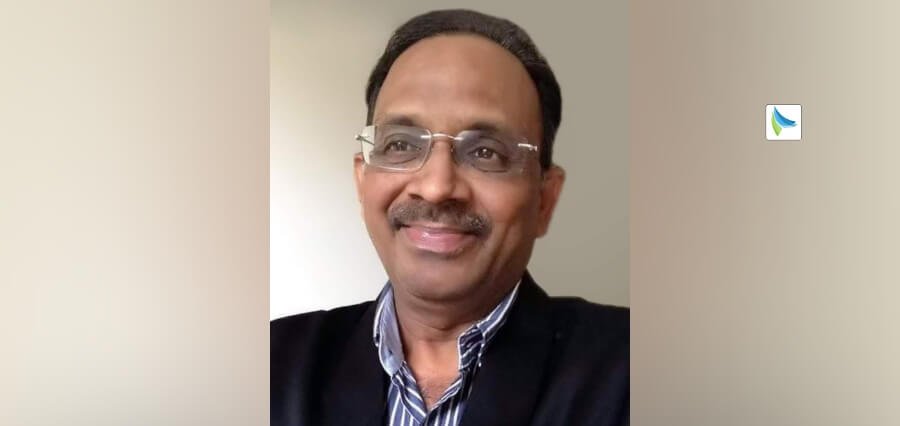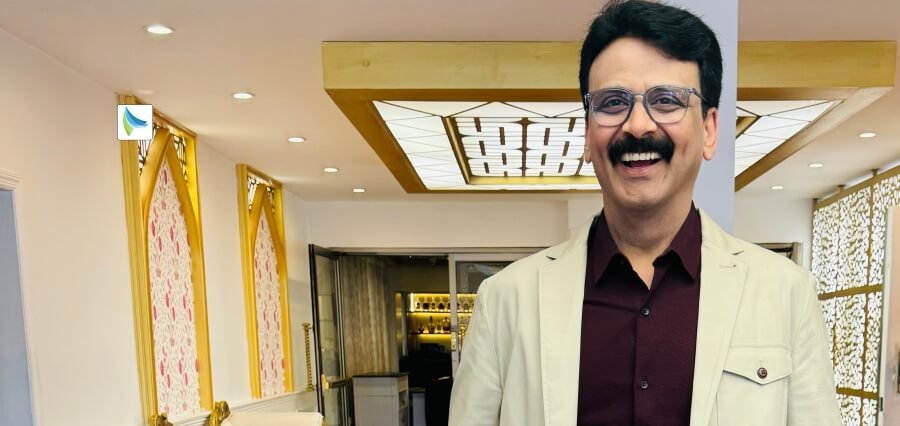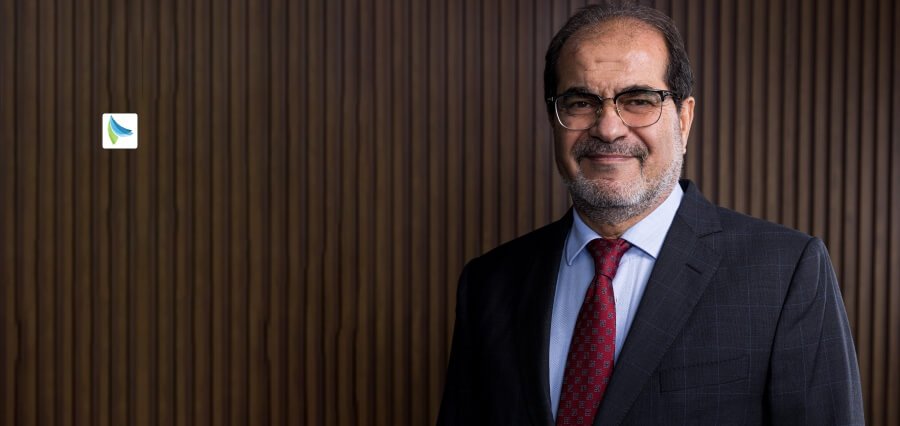The past couple of years have challenged the way how supply chains operate. Networks have been disrupted, with growth and profitability at stake. Today’s supply chain leaders must be agile, willing to embrace change and show an ability to reimagine the existing networks to adapt to the supply challenges of tomorrow. Larry Phelan, Chief Supply Chain Officer at EY Global Services Limited, is a leader who has risen to the challenges of the current economic and geopolitical environment by adopting a truly global mindset.
Starting as a procurement officer, Larry rose to become the leader of Supply Chain Services (SCS) at the global EY organization, even winning the 15th position in BizClik Media Group’s Top 100 Supply Chain Leaders in 2021! He was granted this award for his remarkable work as an innovator of more resilient, sustainable, and diverse supply chains.
He also brought about transformational change at the global EY organization by prioritizing an inclusive culture, strengthening the connective tissue of its supplier ecosystem, and elevating procurement as a strategic opportunity to drive both financial and social value.
Larry is an authentic, inclusive, and inspirational business leader whose keen support for diverse and inclusive teams and suppliers was noted with the WBENC platinum-level award for supporting women-owned businesses.
The instigator of innovation has been nominated for the World Procurement Awards’ CPO of the Year Award in 2016, 2017, and, most recently, in March 2022. When Larry is not busy trying to innovate and transform the world’s supply chain, he can be found traveling, going to the theatre, enjoying golfing with family, or supporting the local not-for-profit programs.
Insights caught up with Larry Phelan on his journey to becoming an iconic business leader at the global EY organization, bringing change to the supply chain industry and his future plans.
Below are the highlights of the interview:
Larry, please describe the highlights of your career. What challenging moments stand out most to you?
My journey as a business leader followed a similar path as others, proactively accumulating experiences and building a network of leaders who saw promise in me, allowing me to develop. From 1985-90, I worked for three different financial services companies and began to build my foundational process, finance, technology, and leadership skills.
From 1990-95, I worked as a financial systems consultant for Price Waterhouse (PW). From 1995-98, I served as the Deputy CIO of PW and Price Waterhouse Coopers (PwC) as a senior partner; they saw something in me, a bit of a diamond in the rough, untapped potential, and extended the role to me.
From 1998-99, I took my process, consulting, and technology experiences and transferred to the PwC Transaction Advisory Services business. I joined the EY organization in 1999 as the EY Americas Operation and Technology Due Diligence Leader, supporting private equity and corporate investors, and was in that role until 2008. In 2008, I was asked to focus on building better linkages between finance and technology as well as lead a small team managing procurement contracts.
In 2009, I was asked to assess and consolidate all EY teams’ global spending in all categories. Now, after a dozen years of focusing on category and sub-category goods and services, how supplier relationships can advance top-line revenue growth, and direct and indirect spend management, I am proud to say the EY organization has a broad yet integrated SCS organization, from contract sourcing to supplier management to payment.
My challenges required self-awareness and self-reflection. I had to embrace a global mindset, learn to balance my usual hard-charging approach with empathy and patience, master the ability to instigate and drive change, work around the blockers, convince the naysayers, and find ways to “get the job done” when recipients have no interest in change.
Describe for our readers the services that the EY organization offers. What is the mission and vision it is striving towards?
As a global leader in Assurance, Consulting, Strategy, Transactions, and Tax, the EY organization is using the finance products, expertise, and systems it developed to build a better working world throughout the Americas, EMEIA, and Asia-Pacific areas.
That starts with a culture that believes in providing the training, opportunities, and creative freedom to make things better. As EY Chief Supply Chain Officer, I support the EY mission and vision by influencing US$10b of Real Estate, Travel, Meetings and Events (TME), Technology, Talent, and Brand, Marketing & Communications spend across all EY markets and regions, which includes 154 countries and over 750 locations.
Please enlighten us about the impact that your work has left on the procurement industry.
The EY focus on “no change, no future” has enabled SCS to transform and continually reinvent the supply chain for EY teams. The components of SCS at the global EY organization are diverse and complex. Knowing how to leverage technology and innovate is paramount. We are constantly looking at how suppliers can advance the SCS agenda and bring improvements based on their experiences working with other organizations.
What are the values and principles that guide EY SCS? How do you ensure a good working environment at your organization?
First and foremost, since the industry and the SCS function are recognized for delivering savings, the SCS function at the global EY organization is laser-focused on providing quantitative value (QV) in terms of savings and cost avoidance and the value return EY teams have come to expect from the SCS function (cost of SCS compared to QV delivered).
However, more relevant in today’s volatile economic and geopolitical environment, a second SCS focus is on going beyond its core responsibilities and providing non-monetary benefits, which we refer to as Brand Value (BV), such as supporting top-line revenue growth, improving EY people experiences, business process improvement, supplier innovation, risk mitigation, and increasingly diverse and sustainable supplier engagement, to name just a few. Third, transformation and innovation are the SCS DNA and influence what the team does themselves and what they do working with our suppliers.
The bottom line, the work culture is one of learning fast from failure and looking to innovate. It’s all about the long game, which means the decisions taken are for today and tomorrow. And, if I may add, one very important part of the SCS culture is to be mindful of your well-being and have fun!
How are you leveraging modern technological advancements to enhance the solutions that you are offering to your clients?
We in SCS demand that our suppliers bring technological advances to the global EY organization so we can devise functional solutions. Internally, we leverage core ERP, AI, and specialty software solutions to get an enhanced level of experience to EY business stakeholders.
Our Real Estate Services team continuously innovates to connect people, space, services, and technology, enhancing the workplace experience, gaining operational efficiencies, improving wellness, supporting commitment to sustainability, fostering collaboration, and increasing our people’s overall contribution to the global EY organization.
They have deployed digital building technologies in 200+ locations across 15 countries. These technologies include a workplace experience app, digital twin, indoor positioning systems, indoor air quality (IAQ) sensors, environmental sensors, and related smart technologies to provide our people with an interactive, intuitive, and frictionless workplace.
Travel, Meetings, and Events Services (TME) advances their industry with technologies that support better traveler experiences, such as the blockchain travel booking process, which reduces the friction of booking and increases travel options offered.
TME assists with industry staffing challenges by operating an internal travel service leveraging telephony and AI Q&A services to reduce inquiries to our travel agency. Their corporate card program leverages RPA and RDA solutions to extract data, improve the reconciliation processes and deploy virtual payment tokens to drive program efficiencies across the supply chain and the business.
Describe what iconic leadership looks like and how you embody it when leading in a dynamically changing market.
There’s no one definition of iconic leadership. Each of us sees it as something a bit different based on our experiences. For me, iconic leadership is about being a visionary who embraces and demonstrates an ability to communicate effectively, think creatively, inspire and lead change and build and develop productive, cohesive teams.
Communication must be a two-way process – give and take. We have one mouth and two ears for a reason. Delivering open, honest, and timely messages combined with a willingness to listen and answer questions builds trust.
Thinking creatively and sharing your vision inspires others to act and think differently. We ask our SCS team members to challenge the status quo and look for new ways of doing things. Our “fail fast” mantra has become part of the SCS DNA and has resulted in exponential innovations being developed each year.
Change is constant. Not only must you embrace it, but you must also seek it out. You must demonstrate your own willingness to change through your actions. My team has seen me change and grow during our years of globalization, and I think I have inspired them to do so as well.
Communicating effectively, thinking creatively, and embracing and leading change each play a part in building and developing productive and cohesive teams. Ensuring your function is seen as a vital part of the organization also plays a part.
In “How to get the board to see your function as strategic, not just as transactional,” a chapter I wrote for the Business Leader Edition in Volume 6 of Mission Matter’s Top Tips to Success, I described the five areas of focus that worked for our SCS function – socialize, be relentless, drive mindset change, focus on exceptional support, and use data analytics as your building blocks.
With a focus on these five areas, we were able to transition from being a function that felt at times like its only role was to “buy enough printers” to a trustworthy function that understands the direction the organization is growing and that fuels the growth. The feeling of pride this inspires for the team is priceless.
And I am immensely proud of the SCS team. What they have achieved, not only in the quantitative and brand value they deliver to the global EY organization but the personal brands they have developed internally and externally for the organization.
Where do you envision yourself to be in the long run, and what are your future goals for the global EY organization?
As I look to the future, I see myself as a significant influencer, driving and leading the transformation and innovation of the SCS function at the global EY organization and the supply chain industry. EY teams require a leading-class SCS function supporting business issues and transformation. The supply chain industry needs to be focused on what it can do for the business beyond financial benefits.
What would be your advice to budding entrepreneurs who aspire to venture into the procurement sector?
In terms of being on the supply side, I advise budding entrepreneurs to ensure they have a viable solution for the company they seek to do business with. In other words, know your audience and bring an experience that matches the needs of the respective company that is easy to use with an ability to integrate into the broader ecosystem of the organization. As part of a supply chain team, I would advise focusing on sustainability and diversity and adopting the EY SCS mantra of “No change, no future.”



















